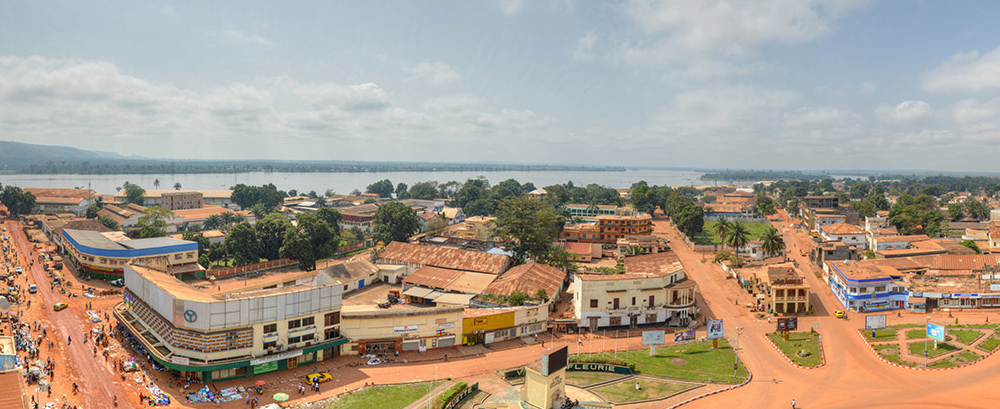
Angola
March 17, 2025
The Republic of Congo
April 12, 2025The Central African Republic (CAR) is a landlocked country in Central Africa that is rich in mineral resources, although much of its potential remains underdeveloped due to various challenges, including political instability, lack of infrastructure, and limited investment. The country’s economy relies heavily on agriculture and mining, particularly of diamonds, which are a significant contributor to export earnings. Here’s an overview of the key mineral resources in the Central African Republic:
Key Mineral Resources
- Diamonds:
- Overview: Diamonds are the most important mineral resource in the Central African Republic. The country is known for its high-quality alluvial diamonds, which are mined both industrially and by artisanal miners.
- Major Diamond Mining Areas: The primary diamond-producing regions are in the southwest and central parts of the country, particularly around the towns of Berbérati, Carnot, and Nola.
- Reserves: The Central African Republic has substantial diamond reserves, particularly alluvial deposits, which have been a key part of its economy for decades. However, the sector has been impacted by conflict and the imposition of international sanctions, including the Kimberley Process, which has affected exports.
- Gold:
- Overview: Gold is another significant mineral resource in the Central African Republic. Gold mining is largely artisanal, although there are some industrial-scale operations.
- Major Gold Mining Areas: Gold is primarily mined in the western and central regions, particularly around the towns of Bambari and Bria.
- Reserves: The gold reserves in the Central African Republic are considerable, with ongoing exploration suggesting potential for further discoveries. The sector, however, remains underdeveloped due to the same challenges affecting diamond mining.
- Uranium:
- Overview: Uranium deposits have been identified in the Central African Republic, particularly in the Bakouma region in the southeast. The development of these uranium resources has been hindered by political instability and lack of infrastructure.
- Reserves: The uranium reserves in the Central African Republic are significant, but they remain largely untapped due to the challenges mentioned above. There is potential for future development if conditions improve.
- Iron Ore:
- Overview: Iron ore deposits have been identified in the Central African Republic, particularly in the western part of the country. Iron ore is essential for steel production.
- Reserves: The iron ore reserves in the Central African Republic are promising, but the sector is underdeveloped due to infrastructure constraints and the need for significant investment.
- Limestone:
- Overview: Limestone is present in the Central African Republic, particularly in the eastern regions. Limestone is an important raw material for the construction industry and cement production.
- Reserves: The limestone reserves are sufficient to support local construction needs, particularly for infrastructure development, but large-scale exploitation is limited.
- Copper:
- Overview: Copper deposits have been identified in the Central African Republic, particularly in the central and southeastern regions. Copper is an important industrial metal.
- Reserves: The copper reserves in the Central African Republic are still under exploration, and the extent of their economic viability has yet to be fully assessed.
- Other Minerals:
- Manganese: Manganese deposits have been identified, particularly in the western part of the country. Manganese is used in steel production and batteries.
- Graphite: Graphite deposits are also present, particularly in the southern regions. Graphite is used in batteries, lubricants, and as a refractory material.
Investment and Extraction Situation
- Challenges to Mining Development: The development of the mining sector in the Central African Republic faces significant challenges, including political instability, lack of infrastructure, and limited access to finance. These factors have hindered large-scale investment and the development of the country’s mineral resources.
- Artisanal and Small-Scale Mining (ASM): Artisanal and small-scale mining is prevalent in the Central African Republic, particularly in the diamond and gold sectors. While ASM plays a crucial role in local economies, it also faces challenges such as lack of formalization, environmental degradation, and safety concerns. The government, with international support, is working to regulate and formalize these activities.
- Environmental and Social Impact: Mining activities, particularly artisanal mining, have significant environmental and social impacts. Issues such as deforestation, water pollution, and conflicts over land use are prevalent. Efforts to improve sustainability and ensure that local communities benefit from mining activities are ongoing.
- International Sanctions and the Kimberley Process: The diamond sector in the Central African Republic has been affected by international sanctions and restrictions under the Kimberley Process due to concerns about conflict diamonds. These sanctions have limited the country’s ability to export diamonds legally, further impacting the economy.


